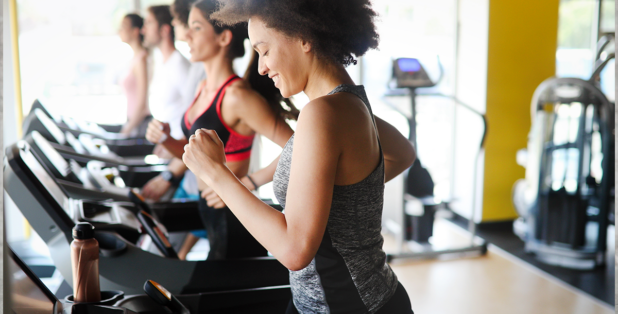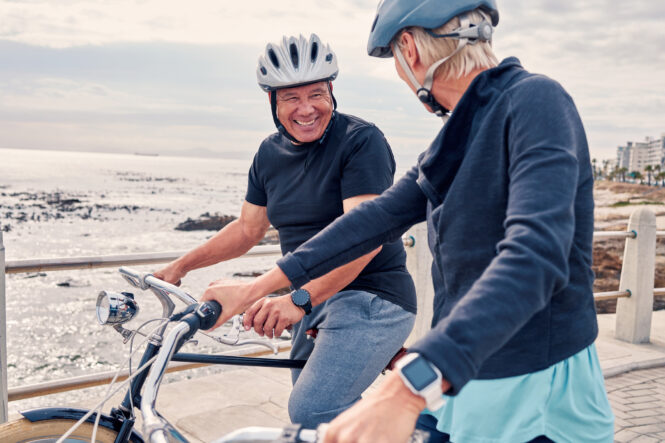At Anika, we’re big proponents of becoming and staying active. With the start of a new year, many of us are setting resolutions, and hoping to reach new heights. With the most common resolution of exercising more frequently, it’s not just about getting fit, but being able to stick to that exercise routine. Exercise can enrich so many aspects of your life – from improving your mental health to strengthening your muscles and bones to boosting energy levels.
In honor of National Personal Trainer Awareness Month — and the start of 2023 — we met with Matt Woonteiler, a personal trainer working in the Boston area, to learn more about how exercise can help with chronic pain and, more broadly, how to stay consistent.
For anyone new to personal training, what should they expect from their first fitness consultation?
Although this varies from trainer to trainer, there’s usually a preliminary interview where we figure out what your goals are so that we can design the best program. What I like to do is start people off slow, getting them comfortable before increasing the intensity. You should constantly be changing up the program; if you do the same thing constantly, your body will eventually plateau — and this goes for any exercise: running, weightlifting, etc. At this stage, I’m just observing where your balance and coordination are so we can figure out how to go from there.
How do you pick the right personal trainer for you and what criteria should be considered?
Before you start sessions with a personal trainer, it’s important to know what your goals are. A lot of people come in wanting to lose weight while others are looking to strengthen and tone. Knowing these goals and communicating them with your personal trainer is going to help you get the most out of your program. I’ll add that it’s important to communicate openly with your trainer by sharing the below details:
- Do you have any current or past injuries?
- Are there specific issues (ex. balance, flexibility, etc.) you want to address?
- What else can you share about your health?
- How has exercise been for you in the past?
- What are you hoping to achieve?
What questions do you ask new or prospective clients?
Training is very goal oriented. We’re trying to find out what you want to achieve and how we can best help you succeed. I’ll want to find out if there’s some movements that hurt and if you have any former injuries that could impact the regimen we plan. The most important thing I’m trying to find out is how to train you effectively and get results without you overexerting yourself or getting injured in the process. Safety and form are very important, so I want to make sure I know exactly what you want and how to design the right program for you.
In terms of low vs. high impact activities, how do you choose the right exercises for your body?
First, it’s important to listen to your body. This is why I’m always checking in and asking, “How does this feel? Are you feeling okay? Do you like this exercise?” I am constantly communicating throughout the session. In terms of low vs. high impact, this depends on the person. When it comes to athletes, for example, they are usually looking for something more high impact. That said, I do want to emphasize that you can get results from low impact or high impact.
If you suffer from joint pain, low impact activities (anything that keeps both feet stable on the ground) can include:
- Strength training
- Cycling
- Walking
- Swimming
How can exercise help with chronic pain and how can I ensure I don’t overdo it?
Chronic pain is something that happens over the years as our body ages. I’ll add that the human body is not meant to be sedentary. Sitting at a desk for hours and hours a day can cause a lot of problems. We are designed to move around, so the more exercise you get, the less pain you will have in your joints and other areas of chronic pain. A lot of the time I find that when people aren’t as experienced with exercise, they don’t know the difference between good pain and bad pain. Good pain is that burning in your muscles that’s going to help build and recruit fibers, strengthen your joints and muscular skeletal system. Bad pain is like a sharp pain or an uncomfortable pain. It’s important to maintain good form and check in with how things feel in your body.
Do you have any tips for maintaining an active lifestyle?
It’s important not to view exercise as providing a quick fix but more for your life and for your health. There’s so many benefits and you should try to view it as a lifestyle — a necessity. It’s also very important to find something that you enjoy. If you don’t like going to the gym or meeting with a personal trainer that’s okay. You can walk outside, exercise in your house, or you can dance. There’s an option for everyone out there as far as movement that you can enjoy to keep yourself healthy. The main thing is finding out what’s going to keep you motivated and consistent.




